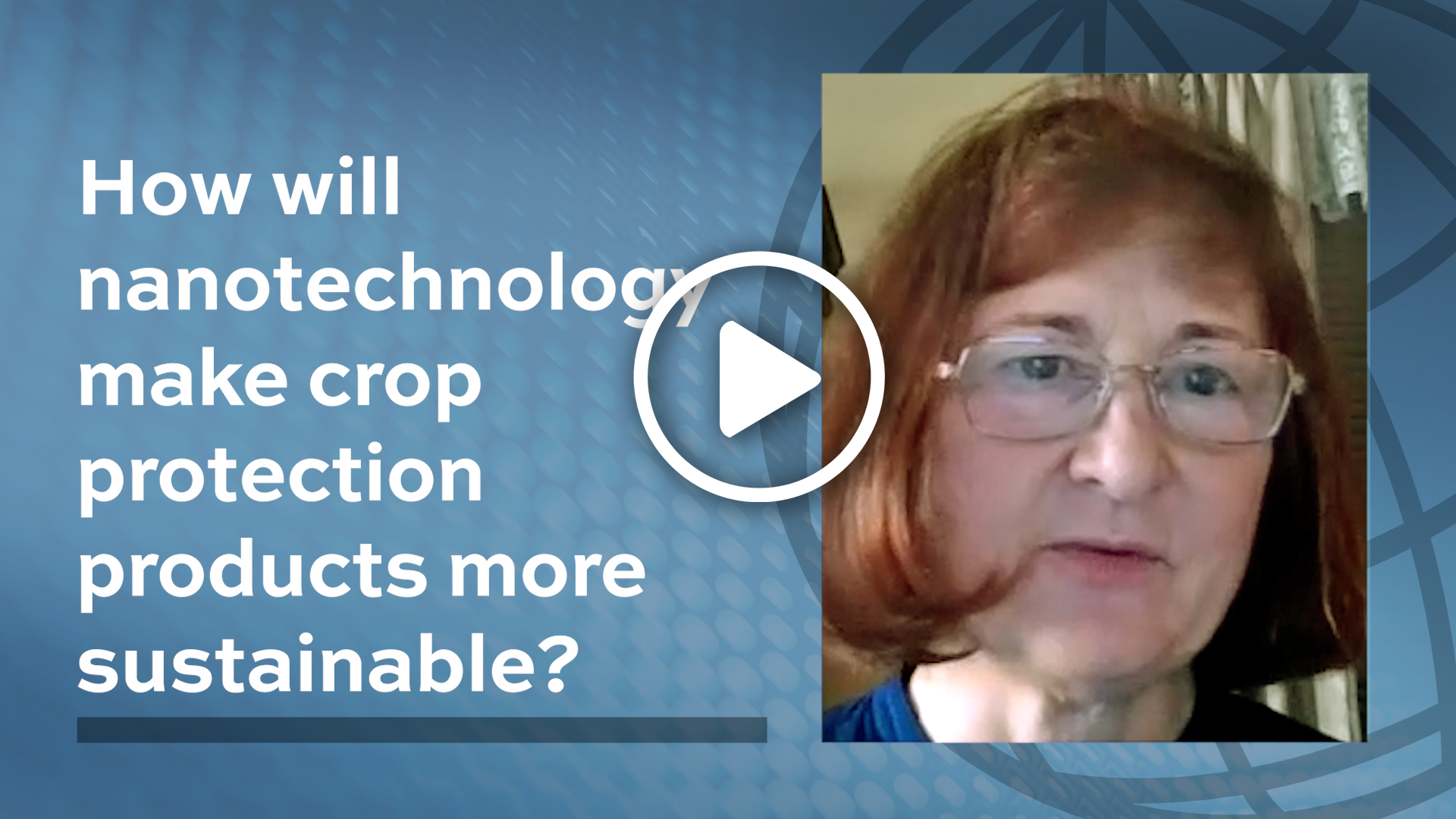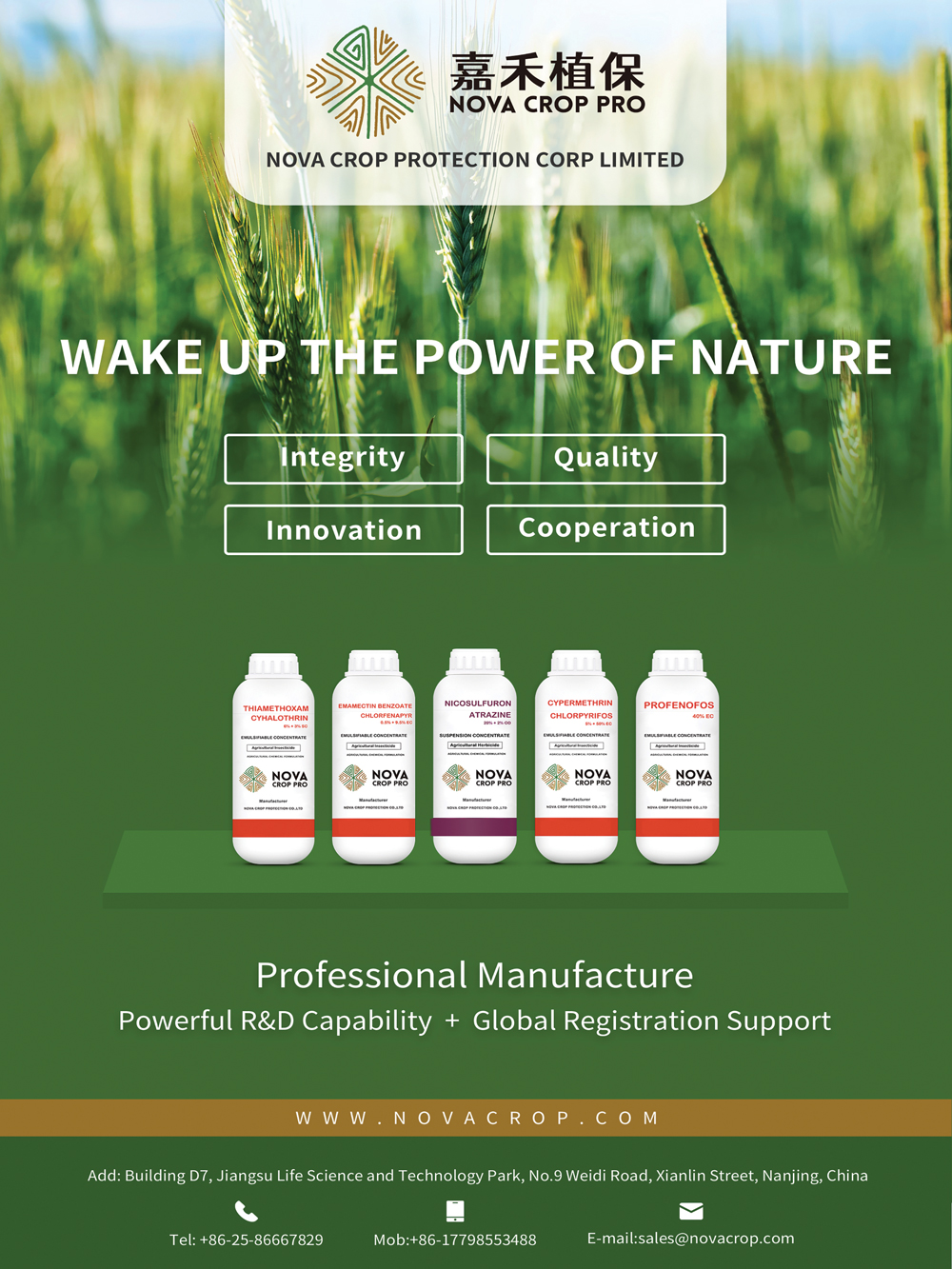From The Editor
Scroll Down to Read
 |
From The EditorRenee Targos |
Conversations with Industry Experts
Nanotechnology: A Piece of the Sustainability Puzzle?
Ag companies serve as one part of a global effort to meet sustainability goals for 2030 and to increase crop yields for feeding a growing population. Some of the ag industry’s successes are the boom in biostimulants, improved biologicals, low residue chemical crop protection formulations, and now enters a new piece of the sustainability solutions puzzle — nanotechnology.
The healthcare nanotechnology market is reaching $306 billion by the end of 2025 — but what’s it doing in the agricultural market? Mariola Kopcinski, Global Business Manager AgroChemicals, Ingevity, shared insights into how nanotechnology is being introduced in the ag industry and what the future possibilities might be.
Meet Your Expert: Kopcinski leads the globally bio-based coformulation ingredients business at Ingevity company in ag chemical, biological, micronutrients, fertilizer, and adjuvants markets. Over her more than 25-year career in the agricultural industry, she served in leadership roles at DuPont, Syngenta, and FMC. She also provided leadership for development and licensing of biological startup companies, and served as the member of Credentials Advisory Council, Sustainability Institute at American Institute of Chemical Engineers (AIChE). She’ll be one of the panel speakers for the biologicals session at the AgriBusiness Global℠ Trade Summit on 9-10 August 2023 in Aventura, Fla.
ABG: How do you define nanotechnology?
MK: To clarify, nanotechnology is a field of applied science and technology that involves manipulating atoms and molecules to fabricate materials, devices, and systems, which are at a scale of 100 nanometers (nm) or less. For most of us, imagining something that is less than 100 nanometers (nm) is very challenging. The average thickness of human hair is between 17,000 nm and 180,000 nm.
Nanoparticles are small molecules and possess many dynamic physical, chemical, thermal, optical, magnetic, and biological properties. These particles have a large surface-to-volume ratio, and their physiochemical properties differ from the bulk materials. Nanotechnology is the synthesis and processing of structures and devices with control at the molecular level and with the use of that, we can improve and optimize the physical and chemical properties of any material.
Nanotechnology is considered the next industrial revolution, impacting virtually all sectors of the economy worldwide.
ABG: What changes will this technology bring to biologicals and traditional chemical crop protection?
MK: Nanotechnology has impacted all agribusiness sectors, with applications covering the entire production chain, ranging from seed care, crop protection and genetic improvement to the post-harvest control and traceability of agricultural and livestock products.
The controlled delivery of active molecules for fertilization and crop protection using nanoengineered nanocapsules is currently the most representative application of nanotechnology in agribusiness.
The nanocoating strategy enables the controlled delivery of agrochemicals and biologicals with longer residence periods in plants and in the soil with enhanced efficacy and safety since the same protective effects can be achieved using significantly lower amounts of active molecules. In addition, reduction of losses of traditional crop protection products will have significant impact on the environment.
Nanomaterials have also been used in the development of advanced sensing platforms for soil, water, and agricultural pest monitoring. Furthermore, with the advent of biological controls and biopesticides, nanotechnology platforms, such as nanocapsules and nanocoatings, will become important tools for improving shelf-life and stability of biological formulations.
ABG: Who are the leaders of this technology?
MK: There are several startups globally looking at nanopesticides, nanofertilizers, and nanoadjuvants, but as of today, there are only a few that are available on the market. Nanofertilizers have the most commercial significance, then nanoadjuvants, and finally nanopesticides.
Nanofertilizers come in different forms, such as nanopowder, nanocapsules, and nanoemulsions. The foliar application of nanofertilizers is the most efficient method as researchers have reported that nanoparticles greater than 10 nm can penetrate via stomata. To reduce overuse, slow releasing nanofertilizers with the nanoencapsulation system allow active ingredients to be released from particles in a slow and controlled matter are recommended.
Nanofertilizers are qualified into three groups: Nanoformulations of micronutrients, nanoformulation of macronutrients, and nutrient-loaded nanomaterials (with the last one been the most popular). Nanocarriers (nanomaterials) are safer for workers, more environmentally friendly, and can release fertilizer in a very precise manner. Polymeric nanoparticles, carbon-based nanomaterials, nanoclay, and silica are the most used.
As this is an emerging technology in agriculture, it is hard to say who are the leaders in that space. Examples of approved nanofertilizers used in the world today and their manufacturers are: Nano Calcium (AC International Network Co., Ltd., Germany), Nano-Micro Nutrient (Shan Maw Myae Trading Co., Ltd., India), Nano Green (Nano Green Sciences, Inc., India), Nano-Fertilizer (Fanavar Nano-PazhooheshMarkazi Company, Iran) and Aqua-Yield Operations LLC, nano-smart fertilizer. For pesticides, Vive Crop Protection, Canada with products containing the Allosperse Delivery System.
ABG: How do you see this working with ag tech?
MK: Nano products provide better absorption, penetration, and higher efficiency thanks to extremely high surface-to-body ratio. As result of that, nano products provide several benefits — improved efficacy, targeted delivery, improved compatibility, enhanced bioavailability, new functionalities, improved stability, lower use rates and controlled release — characteristics crucial for UAV (drones) and precision ag.
ABG: Can you describe how you think nanotechnology will shift the market?
MK: Nanotechnology can have a profound impact on agriculture production. In order to increase production to supply a growing global population, several challenges must be overcome at the same time with a reduction of negative environmental impact. Nanotechnology, fundamentally through the development of smart delivery systems and nanocarriers, can contribute to engineering more efficiently and with fewer contaminant agrochemicals and fertilizers, with lower use rates, and controlled delivery systems reaching targets much more precisely.
ABG: What are regulations looking like for this technology, and how fast will new formulations get to market?
MK: As the application of nanotechnology becomes a more realistic option for the ag industry, there has been a growing concern on the possible human and environmental health implications that may occur as a result. For example, special concern is related to potential bioaccumulation of nano-enhanced materials within the environment and food chain that can eventually reach human consumption.
The United States Environmental Protection Agency (EPA) requires that all pesticides used within the agricultural industry are reviewed under the Federal Insecticide, Fungicide and Rodenticide Act (FIFRA). Since 2016, EPA has been focused on investigating whether nanopesticides exhibit greater benefits than traditional pesticides, as well as the potential risks that these materials may cause to the environment and human health.
Since 2011, when the European Commission published an official definition for what a nanomaterial is, a considerable number of resources have been dedicated toward ensuring the safety of these materials to both humans and the environment. In regard to the agricultural industry, the Plant Protection Products Regulation (EC 1107/2009) is responsible for regulating the use of pesticides, thereby requiring nanomaterials to be assessed in the same way in which any other active ingredient would be investigated for potential toxicity and environmental fate.
On 3 December 2018, the European Commission (EC) adopted Regulation 2018/1881, amending the existing Registration, Evaluation, Authorization and Restriction of Chemicals (REACH) regulation, to directly address nanoparticles. The nanotechnology regulation applies to any substance that might be, or might contain, a nanomaterial (e.g., powder), whether it has been manufactured as nanotechnology. Crucially, the revised nanoparticle regulation applies to both new and registered substances, and all dossiers will need to be updated with the necessary data.
In Brazil, bill 880/2019 aims to create the legal framework for nanotechnology including, among others, the National Nanosafety Program, in line with Organization for Economic Co-operation and Development (OECD) guidelines and recommendations. It also covers scientific development, research, scientific and technological training and nanotechnological innovation in Brazil.
So, although we see some companies coming with nano products into the ag market, true market penetration and the speed of adoption is difficult to predict in light of regulatory safety concerns. •



